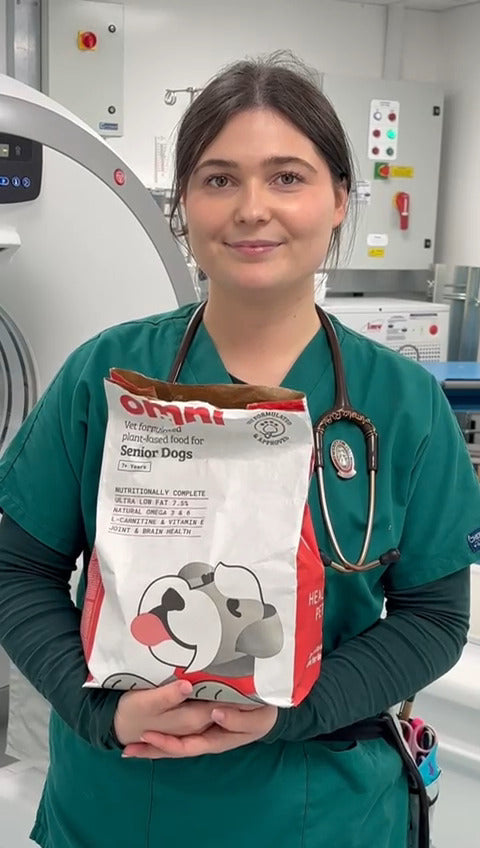Why is my dog a fussy eater?

Over a third (37%) of dogs in the UK are considered to be ‘fussy eaters’ according to recent guardian reported research. Let’s consider a few factors that might be contributing to their fussy eating habits, and what you can try to do to help bring back the joy to meat times for your doggo, if they are one of them!
Freshness of food
Once a container of dog food is opened it gets exposed to the air of a room and the process of fat rancidification accelerates. This essentially means the oils in your doggos grub become oxidised and start to smell and taste different which could greatly impact your doggo’s interest in their once favourite food.
Solution? Keep your bag of dry food resealed between meals and try to squeeze out as much air as possible. We sell Omni bag clips precisely for this reason! Cover wet food and keep refrigerated and try to use soon after opening.
Getting used to human food
If you have a dog that begs for food at the table and enjoys sharing your yummy human food with you, know that their food might taste somewhat boring in comparison. Commercial dog food is required to be ultra low in salt (by law) and to be healthy enough to be the only food your dog will eat, for every meal for their whole life. That means, compared to a piece of toast or a potatoe chip, it is hard for your dog food to compete! Before long you might find yourself in a situation where your dog will only want to eat the ‘tastier’ human food, and although home cooked diets for dogs are possible, they are quite tricky to get right and easy to get wrong!
Solution? Limit feeding your dog human food, especially unhealthy snacks high in salt, sugar or fat. Instead opt for healthier alternatives such as low fat dog treats or fresh carrot sticks and cucumber battens - your dog will still enjoy them without making their regular commercial dog food seem ‘bland’ in comparison
Variety is the spice of life
Like us, dogs can get somewhat fed up of eating the same food day in and day out.
Solution? Stock up on our delicious wet food taste toppers and add them to meals to increase variety. We stock No–Chick Chunks and No-Beef Bites and we utilise patent pending 3D chunking technology that gives dogs the taste and fibrous texture of real meat with a fraction of the fat!
Smell and texture matter lots to dogs!
If you are feeding dry food, adding some warm water to the food 60 seconds before feeding can increase the smell factor and change the texture of the food. For many dogs, this alone can solve their ‘fussy eating’ habits so well worth a go!
Switch kibble as a last resort
If you’ve tried all of the above but your dog is still not playing ball, you might want to consider switching diet.
We have recently formulated a new fussy eater recipe with carob, apple and a delicious herb mix, specifically to tempt even the fussiest of palates. If you would like to sample a free bag to see what your dog thinks, please email us at woof@omni.pet and we will get that sorted for you.
And of course, make sure they’re not actually sick…
Whilst both may refuse their dinners, there’s a difference between a ‘fussy’ and a ‘sick’ dog. If your dog is happily begging for your food and hoovering up treats- they’re probably just fussy and have learnt that waiting pays off.
If, however, your dog is also showing any other symptoms, such as being more lethargic than normal, passing diarrhoea, crying, losing weight, vomiting or anything out of the ordinary, then perhaps they’re not feeling their best self and a vet check might be the best next step. Our subscribers have access to complimentary online vet consultations, which can be booked in here.







 85 Great Portland Street, 1st Floor, London, W1W 7LT United Kingdom
85 Great Portland Street, 1st Floor, London, W1W 7LT United Kingdom